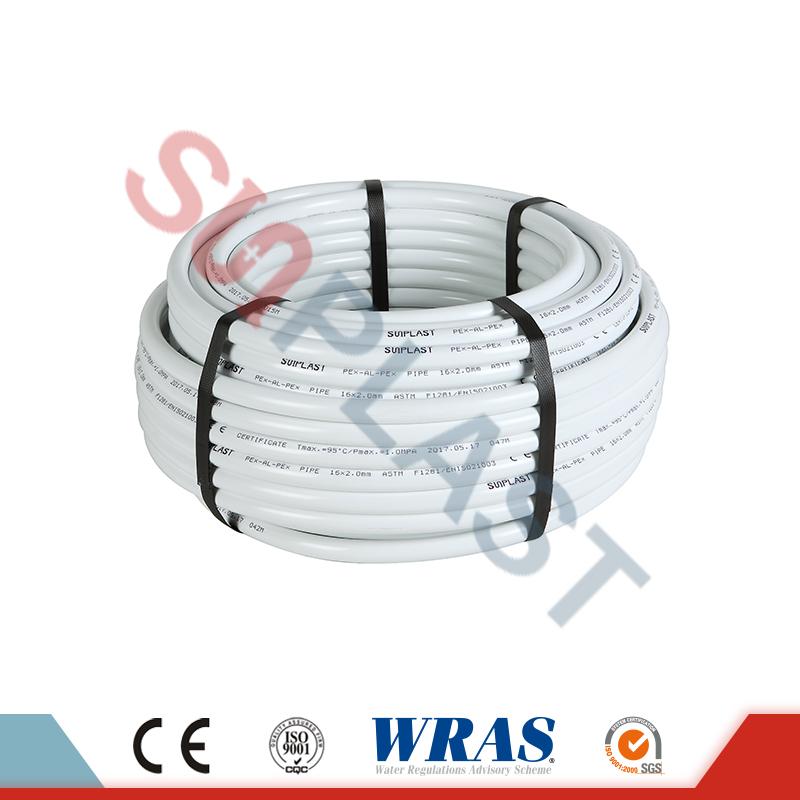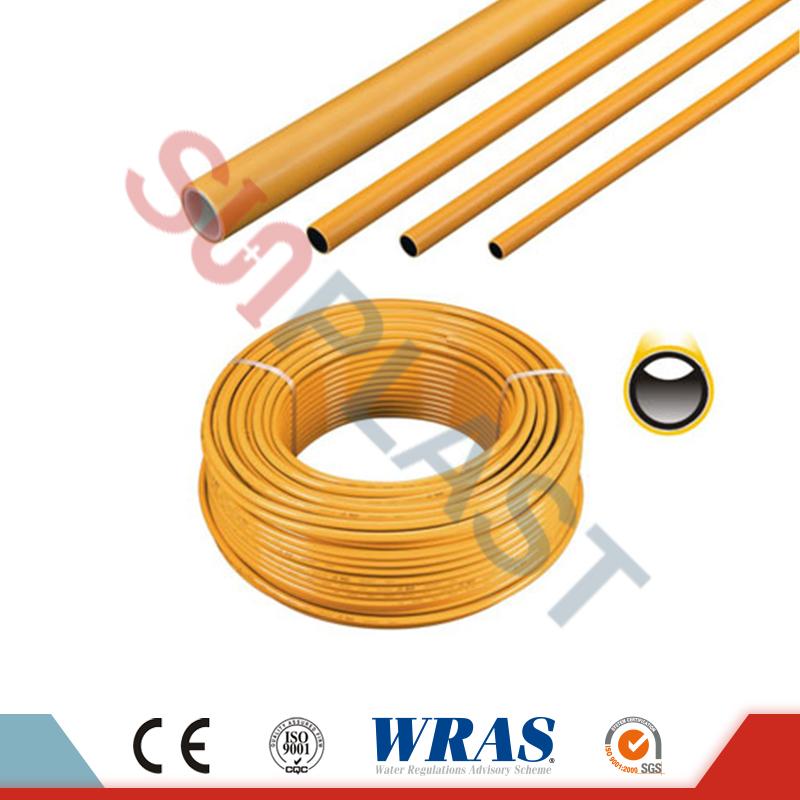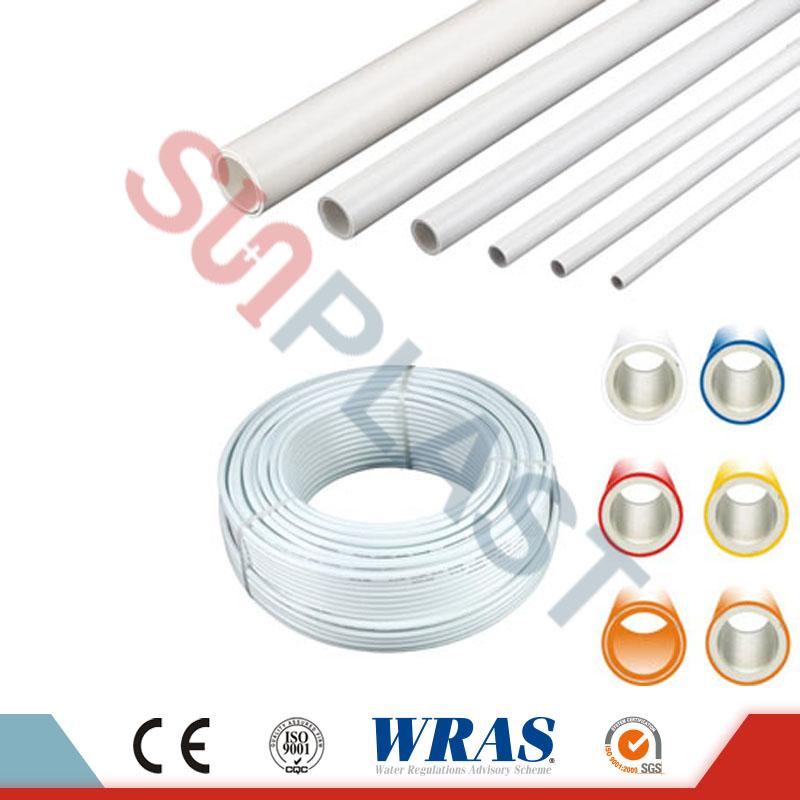
- English
- Español
- Português
- русский
- Français
- 日本語
- Deutsch
- tiếng Việt
- Italiano
- Nederlands
- ภาษาไทย
- Polski
- 한국어
- Svenska
- magyar
- Malay
- বাংলা ভাষার
- Dansk
- Suomi
- हिन्दी
- Pilipino
- Türkçe
- Gaeilge
- العربية
- Indonesia
- Norsk
- تمل
- český
- ελληνικά
- український
- Javanese
- فارسی
- தமிழ்
- తెలుగు
- नेपाली
- Burmese
- български
- ລາວ
- Latine
- Қазақша
- Euskal
- Azərbaycan
- Slovenský jazyk
- Македонски
- Lietuvos
- Eesti Keel
- Română
- Slovenski
- मराठी
- Srpski језик
What Is Multilayer Pipe and Why Is It Transforming Modern Piping Systems
2025-10-28
When I first joined SUNPLAST, I quickly learned that innovation in piping systems often comes down to one key product—the Multilayer Pipe. It combines the best qualities of plastic and metal, delivering exceptional performance for plumbing, heating, and gas systems. In this article, I’ll share insights from years of field experience to help you understand what multilayer pipes are, how they work, and why choosing the right one can dramatically improve your project’s efficiency and durability.
Table of Contents
-
What Is a Multilayer Pipe
-
How Does a Multilayer Pipe Work
-
What Are the Key Advantages of Multilayer Pipes
-
What Technical Parameters Define Multilayer Pipes
-
What Are the Common Applications of Multilayer Pipes
-
How Does Multilayer Pipe Compare with Other Pipe Types
-
What Mistakes Should You Avoid When Choosing Multilayer Pipes
-
FAQ – What Do Customers Often Ask
-
Why Choose SUNPLAST Multilayer Pipe
-
Ready to Get Started
What Is a Multilayer Pipe
A multilayer pipe is a composite pipe made by bonding several layers of materials together—typically polyethylene (PEX or PE-RT) and aluminum. The result is a flexible yet strong pipe that combines the corrosion resistance of plastic with the dimensional stability of metal.
In most cases, a multilayer pipe has the following structure:
-
Inner Layer: PEX or PE-RT plastic for smooth flow and corrosion resistance.
-
Middle Layer: Aluminum, welded or overlapped, for pressure resistance and oxygen barrier.
-
Outer Layer: PEX or PE-RT again, protecting the aluminum layer from mechanical damage and UV exposure.
This unique design makes multilayer pipes a preferred choice for hot and cold water plumbing, floor heating, and gas supply systems.
How Does a Multilayer Pipe Work
From a technical point of view, multilayer pipes work by combining the benefits of both metals and plastics. The aluminum layer acts as a pressure-resistant core that prevents pipe expansion when exposed to high temperatures, while the inner and outer plastic layers ensure corrosion resistance and chemical stability.
During installation, the pipe can be easily bent by hand but still retains its shape—saving time and reducing the need for fittings. Once connected with compression or press fittings, the system provides a long-lasting, leak-free performance.
What Are the Key Advantages of Multilayer Pipes
Over the years, I’ve seen multilayer pipes outperform traditional materials in both residential and commercial projects. Here are the key advantages:
✅ High Temperature & Pressure Resistance – Suitable for up to 95°C and 10–20 bar pressure.
✅ Corrosion & Scale Free – Unlike metal pipes, multilayer pipes never rust or clog.
✅ Excellent Flexibility – Easy to bend and install, even in tight spaces.
✅ Low Thermal Expansion – The aluminum layer minimizes expansion, ensuring stable systems.
✅ Long Lifespan – Tested to last over 50 years under standard working conditions.
✅ Hygienic & Safe – Non-toxic materials suitable for potable water.
✅ Oxygen Barrier Protection – Prevents oxygen diffusion that causes corrosion in heating systems.
What Technical Parameters Define Multilayer Pipes
As a manufacturer, we at SUNPLAST provide multilayer pipes that meet international standards. Below is a summary of our key product parameters:
| Parameter | Specification | Notes |
|---|---|---|
| Pipe Type | PEX-AL-PEX / PE-RT-AL-PE-RT | Two common multilayer configurations |
| Outer Diameter | 16mm – 63mm | Standard range for plumbing and heating |
| Wall Thickness | 2.0mm – 4.0mm | Varies with size and pressure rating |
| Working Pressure | Up to 20 bar | For hot & cold water or heating |
| Working Temperature | -40°C to +95°C | Suitable for most climates |
| Aluminum Layer Thickness | 0.2mm – 0.5mm | Ensures strength and stability |
| Connection Type | Compression / Press / Sliding Fitting | Multiple jointing systems available |
| Standard | ISO 21003 / ASTM F1281 / DIN 16836 | Certified quality |
| Lifespan | Over 50 years | Long-term system reliability |
Each parameter directly impacts the pipe’s performance. For example, thicker aluminum means better stability, while PE-RT layers provide superior flexibility.
What Are the Common Applications of Multilayer Pipes
In real-world use, multilayer pipes have become a go-to solution for engineers and installers across multiple industries:
-
Plumbing Systems – Hot and cold water supply lines in residential and commercial buildings.
-
Underfloor Heating – Ideal for radiant floor heating due to even heat distribution.
-
Radiator Connection – Works efficiently with modern heating systems.
-
Compressed Air Lines – Clean and corrosion-free air delivery.
-
Gas Supply Systems – Certified for natural gas and LPG use.
This versatility makes multilayer pipes a reliable choice for both new construction and renovation projects.
How Does Multilayer Pipe Compare with Other Pipe Types
| Feature | Multilayer Pipe | PPR Pipe | Copper Pipe |
|---|---|---|---|
| Flexibility | High | Low | Low |
| Corrosion Resistance | Excellent | Good | Poor |
| Thermal Expansion | Very Low | Medium | Very Low |
| Installation Speed | Fast | Moderate | Slow |
| Cost Efficiency | High | Moderate | Low |
| Lifespan | 50+ years | 30+ years | 20+ years |
Multilayer pipes deliver the best overall balance—flexibility, longevity, and efficiency. Unlike copper, they resist corrosion, and unlike PPR, they maintain shape and stability under heat.
What Mistakes Should You Avoid When Choosing Multilayer Pipes
Based on countless installations I’ve seen, here are a few common mistakes to avoid:
-
Ignoring pressure and temperature ratings.
-
Using incompatible fittings.
-
Failing to use proper tools for press or compression connections.
-
Over-bending or kinking the pipe.
-
Installing without adequate support or insulation.
A small installation error can compromise long-term performance, so proper selection and handling are essential.
FAQ – What Do Customers Often Ask
Q1: Are multilayer pipes suitable for both hot and cold water?
Yes, SUNPLAST multilayer pipes are designed for both, withstanding up to 95°C and 20 bar pressure.
Q2: Can I use multilayer pipes for gas systems?
Absolutely. We offer multilayer gas pipes that meet ISO and EN standards for safety and reliability.
Q3: How long do multilayer pipes last?
With correct installation, they can last over 50 years without corrosion or leakage.
Q4: What tools are needed for installation?
You can use compression, sliding, or press-fit systems with basic hand tools and a pipe cutter.
Q5: Are multilayer pipes eco-friendly?
Yes, the materials are recyclable and non-toxic, ensuring a low environmental impact.
Why Choose SUNPLAST Multilayer Pipe
At SUNPLAST, we’ve spent decades perfecting multilayer pipe production—from material selection to precision extrusion and welding. Our pipes are tested under extreme conditions to guarantee safety, reliability, and consistent performance.
We provide full technical documentation, third-party certifications, and global after-sales support to ensure your project runs smoothly. Whether you’re a distributor, contractor, or system designer, we tailor our solutions to meet your local standards and installation practices.
Ready to Get Started
If you’re looking for a durable, cost-effective, and future-proof piping solution, SUNPLAST Multilayer Pipe is your answer. We’re confident our experience and product quality can help you achieve better results in your next project.
👉 Contact us today to get a detailed quotation, request samples, or consult with our technical team. Let’s build a long-term partnership that keeps your systems flowing smoothly for decades to come.







